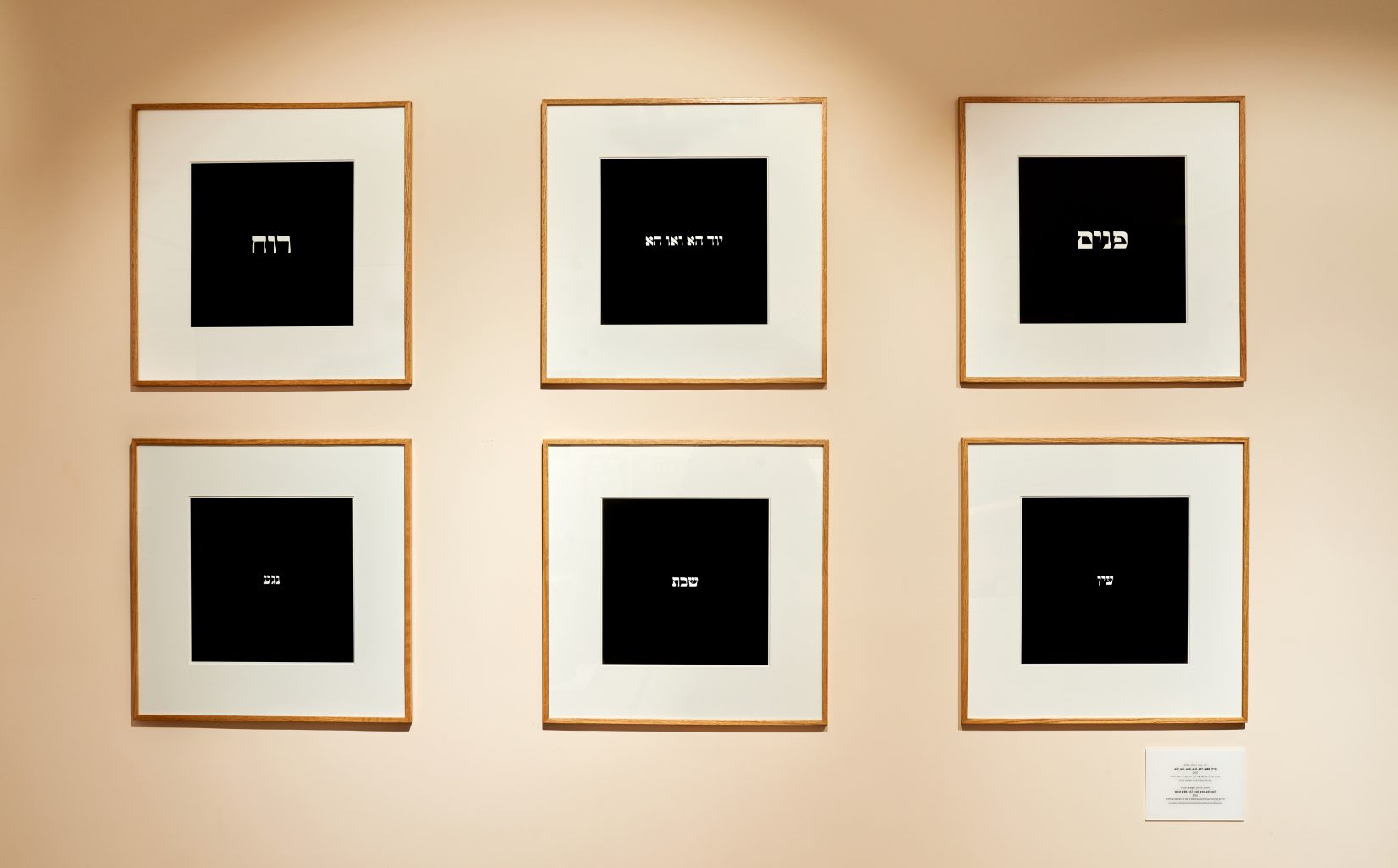Yossi Breger (1960-2016)
Word #18b, #37, #40, #44, #61, #67, 2016
18 artworks, archival inkjet print
Courtesy of the Leonid and Tatiana Nevzlin Collection
Must Know
Yossi Breger was an important Israeli artist and headed the photography department at the Bezalel Academy in 2000-2006. The series Word consists of six words: Shabbat (Sabbat/sitting), Ruah (spirit/wind), Panim (face/inside), Naga (to touch/damage), Ein (eye/nothing), Yud hei Vav hei (God). These homonyms – words with similar sounds but different meanings which, in this case, appear frequently in the Bible – were written in white letters on black squares and set in white frames under glass that reflects the viewer’s face. The words were taken from the first section of Maimonides’s The Guide for the Perplexed. Each carries several meanings and, according to Maimonides, should not be understood literally but as a key to understanding or experiencing the “abstract whole.” The words float alone in their frames, grounded to the wall by the words that surround them. The viewer is invited to unite the pieces and come closer to God.
More Info
Yossi Breger was an important Israeli artist who headed the Department of Photography at Bezalel Academy from 2000-2006. here, white words on a black background are reduced to their minimal formal language. Standing alone, free from their original context, the words’ accumulation gives rise to a new story, a time-space relation constructed by both the reflection in the glass and the meaning built through association.
“Words” consist of six words: Shabbat, Ruach, Panim, Nega, Ayin, Yud heh Vav heh. The viewer is reflected in the glass of the six pieces, so that the word shows on his/her face. The homonyms – hebrew words that repeatedly occur in the Bible, with various meanings – are written in white, each set in a black square framed in white. They were taken from the first part of Maimonides’s “The Guide for the Perplexed”, all words that hold more than one lexical indication or meaning, and, according to Maimonides, they should not be read literally. They are keys to understanding or experiencing an “abstract whole”. Each word floats by itself within its frame though other words frame it on the wall. The viewer is invited to connect the various parts to the whole, and thus get closer to the divinity.

